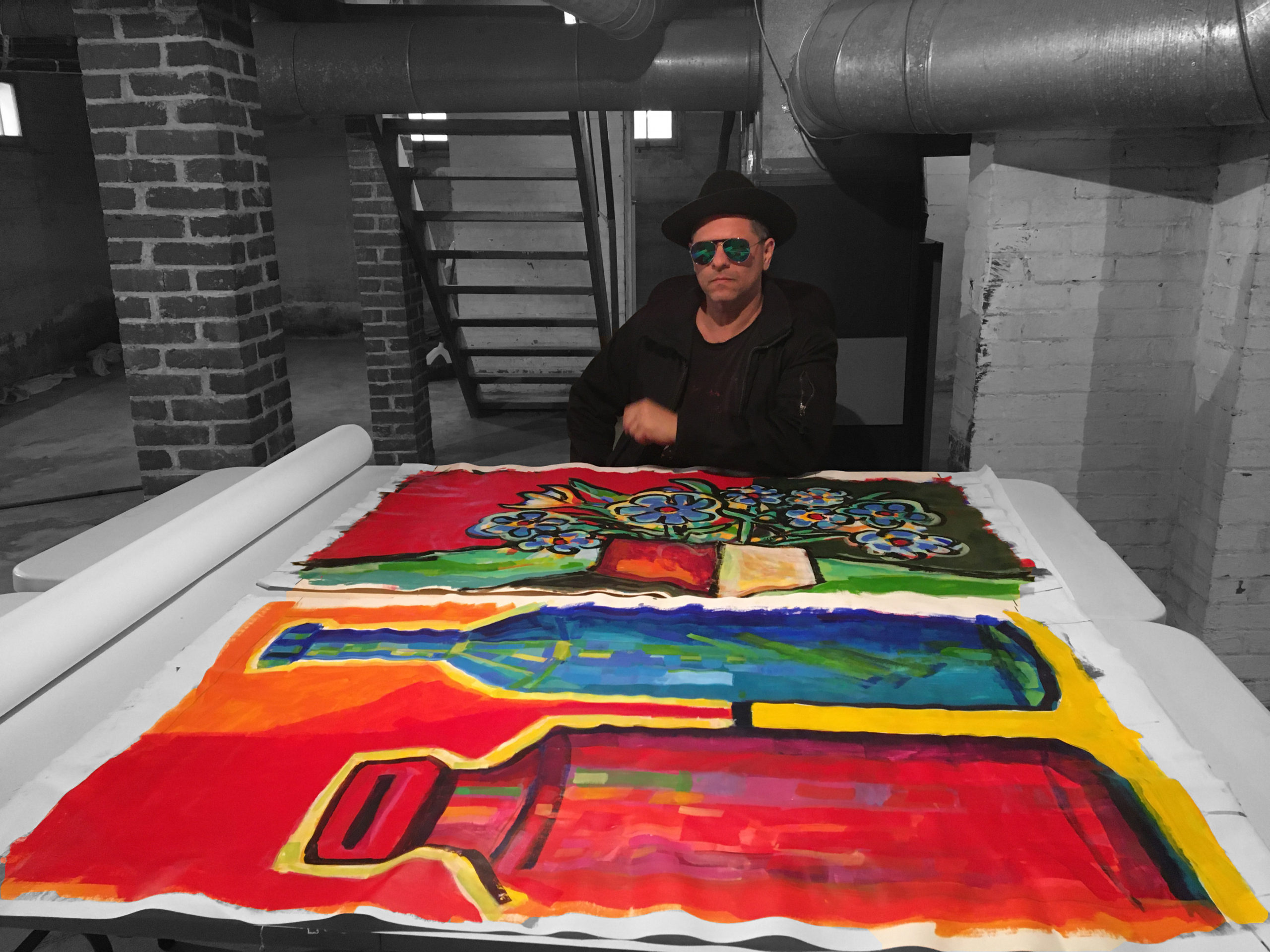
Pablo Díaz-Carballo is an international artist who works on contemporary art research projects. His painting gave rise to a Conceptual Art proposal that was converted through the Expanded Concept of Art into a cultural work of art, parallel and complementary to his painting.
The end of the Painting

With Kazimir Malevich and Lucio Fontana the end of Academic Painting as it had been understood until then was declared.
With Malevich’s work, a white square on a white background; and with the cuts of the canvas of Fontana on the neutral canvas, the “end” of the painting was marked. That is to say, all the possibilities and combinations of the elements of expression had been studied, perspective, analysis, interaction, variables, tensions, harmony, composition, color had been resolved.
Then suddenly the door to conceptual art opened.
For Pablo Díaz-Carballo, even today, painting is a key reference that he would resort to again and again to solve problems of conceptual art, and is the fundamental and main activity of his that makes him interact with his work of conceptual art.
The Expanded Concept of Art
The Work of Cultural Art of Pablo Díaz-Carballo emerged from Painting to Conceptual Art. It is the idea-metaphor of the House of the Mind that was developed in space and time through fine arts, social sciences, technology and innovation in educational methodology.
The Expanded Concept of Art can be transformed into a Work of Cultural Art, which is an organic and intangible work of art, which is evidenced through the artist’s proposal, the projects and the tangible results that he obtained. Today this historical work will be shown in a Museum of Contemporary Art.
Pablo Díaz-Carballo started from his painting with the metaphor of The House of the Mind, and in Conceptual Art with the question: What is Art? In this way he interacted with his painting and developed this concept beyond his art study.
The result was his Cultural Work (La Buena Gripe & IDEO ARTE) that impacted more than 4,620 students and indirectly more than 15,000 people.
The cultural artwork of Pablo Díaz-Carballo was at the same time the source that inspired the development and feedback of his painting during that period, and both have developed in parallel movement since 1999.
The current process of the art studio
He currently continues to work on new paintings related to this process, in such a way that this work of Cultural Art became a painting again. The painting remains the basis for all of his artwork.
Arelis Díaz has been working with him for 23 years as the manager of these projects.
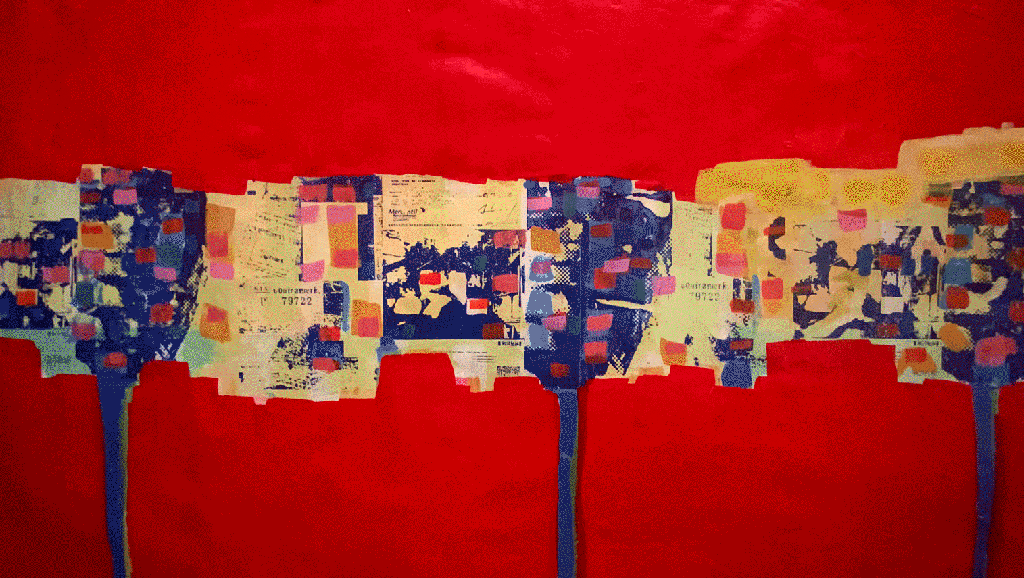
“Plastic process of the concept” 40 x 26″ acrylic on canvas, 2020. This work was made with the original documents used by Arelis, from the management of IDEO ARTE, and represents a timeline of one of the projects with its development milestones.
Historical development
From the Cultural Action to the Contemporary Art and Academic Painting

Pablo Diaz Carballo has been a professional contemporary artist since 1999, a cultural activist since 1980-83, and one protagonist of the punk-rock movement in Caracas, consisting of artists, filmmakers, poets, graphic designers, and other political activists.
In less than a year the movement was infiltrated by socialists, communists and neo-nazis, with which Pablo Díaz withdrew from the movement. Although they did not have a political ideology, they fought for human rights, justice, demanding high quality in the education, against political corruption and for economic freedom, so the arts and music was the best way to do it.
To understand the meaning of activism it is necessary to understand that if you want to change the system you do not have to burn the city; you must be more creative that the system and contribute values so that you can make changes.
Pablo Díaz Carballo carried out parallel studies to his artistic career. He studied two years of visual arts, at a technical level, and then five years until he obtained a degree in art, mention in painting.
While studying arts, in parallel, he studied other complementary disciplines: he did three years of history at the university, there he studied anthropology, sociology, philosophy. He also took three years of classical piano and drums, graphic design, among other complementary courses to his artistic career.
All this previous knowledge was very useful to define his conceptual art proposal and later for the development of his cultural work.
He graduated in painting, cum laude, in 1999 where he began his professional art career, with the support of Arelis Diaz as project manager.
Conceptual Art
Marcel Duchamp: In conceptual art, the limits of the definition of art disappear. – The concept becomes more important on technique and trade. – The concept of the work of art is no longer conditioned to formal or expressive criteria. – Any object can be submitted to the interpretation of the artist. – Any object can be turned into a work of art. -The artist has absolute freedom and authority to decide what is art. – Sculpture and painting lose their autonomy. – The line that differentiates painting from sculpture disappears. – The work of art is made integral and can contain any plastic element according to the concept of the work.s.
From the Painting to the Conceptual Art
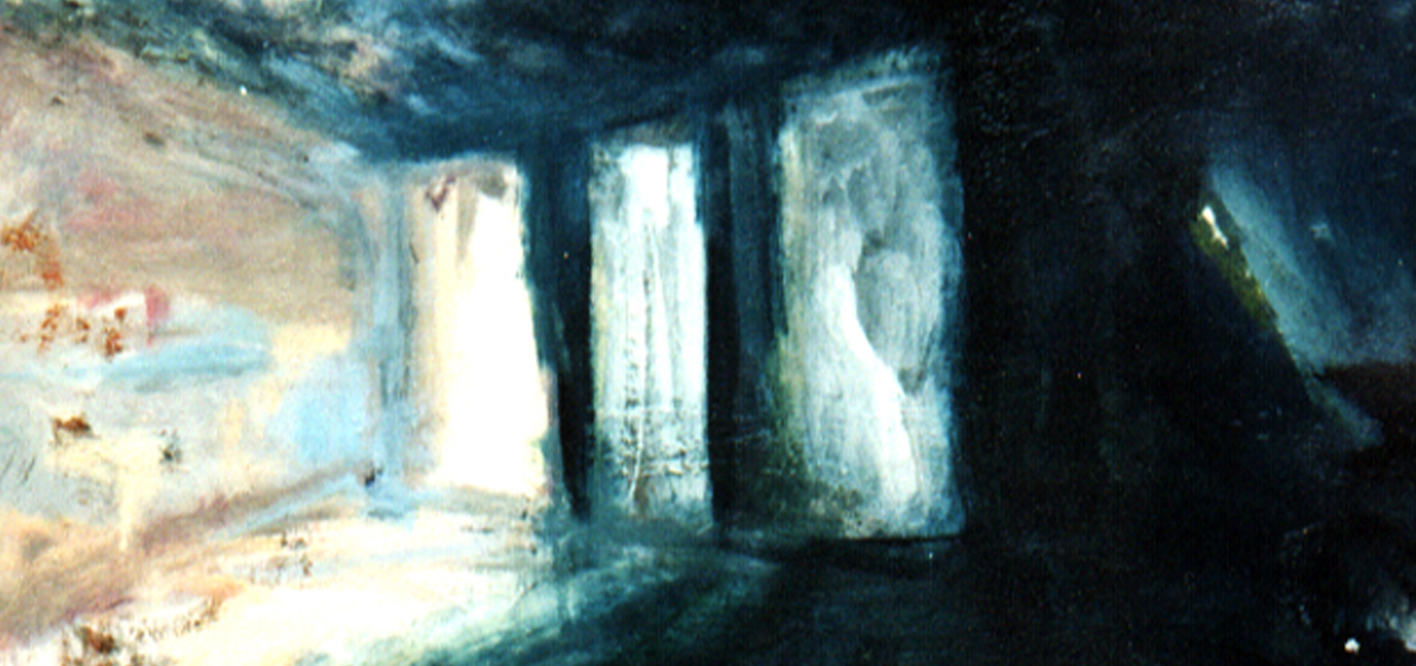
The Three Windows of Consciousness – Oil on Paper, 36″ x 24″ – 1999 – Pablo Diaz Carballo.
In 1994, the conceptual art project originated from Pablo’s first paintings, in which he represented the metaphor of “The House of the Mind”. He continues developing this metaphor through his career, current paintings, and projects.
THE HOUSE OF THE MIND
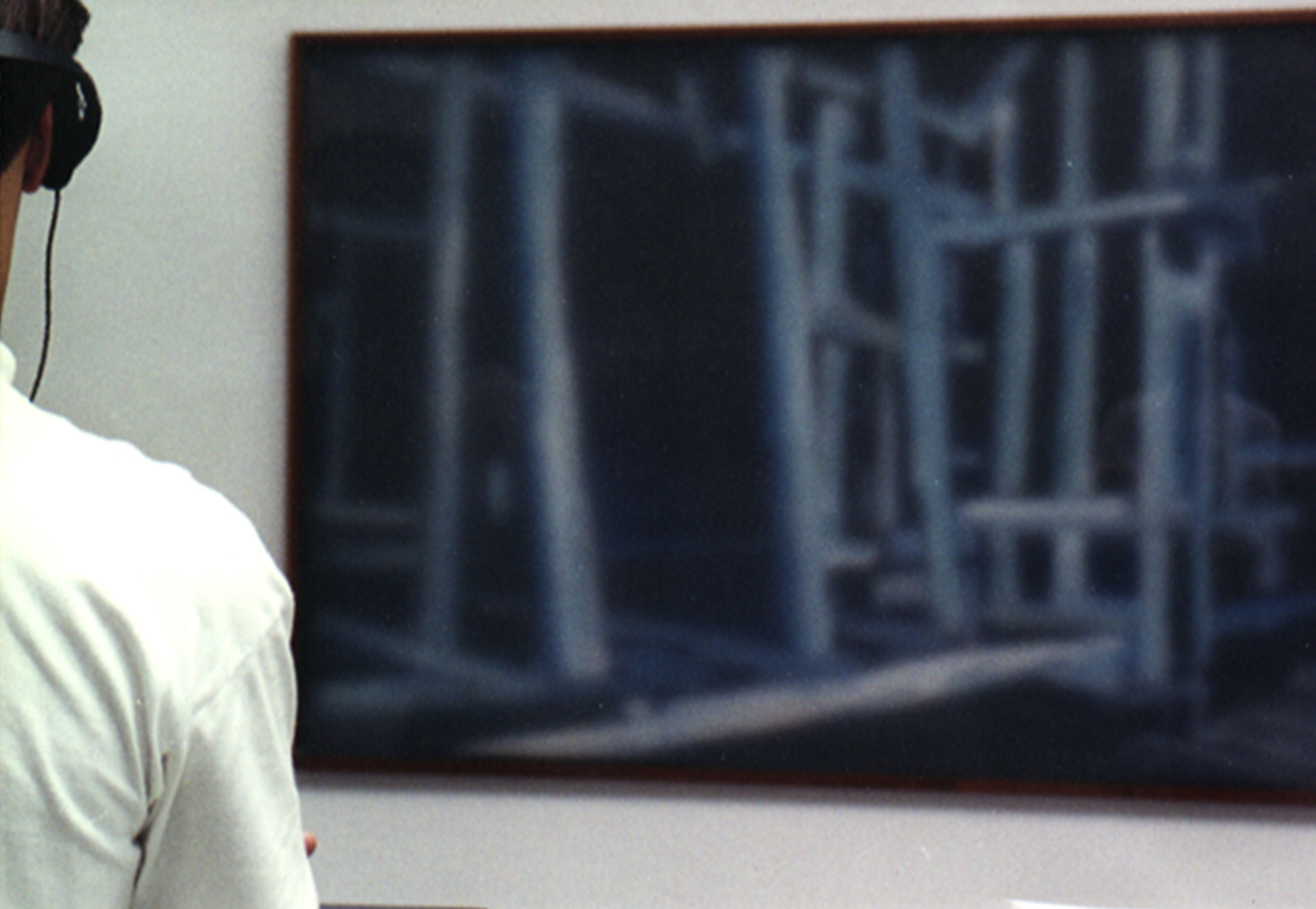
Pablo Diaz Carballo – Arte conceptual – Instalación – Oleo sobre MDF y lámina de acrílico sobre la pintura para producir una imagen difusa – Audio del análisis de los críticos de arte que miraron el cuadro antes de ser velado por la lámina de acrílico.
As Pablo Diaz painted, he dubbed the concept from which his images emerged “The House of the Inner Being” or “The House of the Mind”. Pablo’s concepts explore the state of man’s inner being, particularly his mental and spiritual condition. He represents these ideas in his paintings by using as metaphors the images of lights and shadows, the architecture, the house, the window, the door and structures under construction.
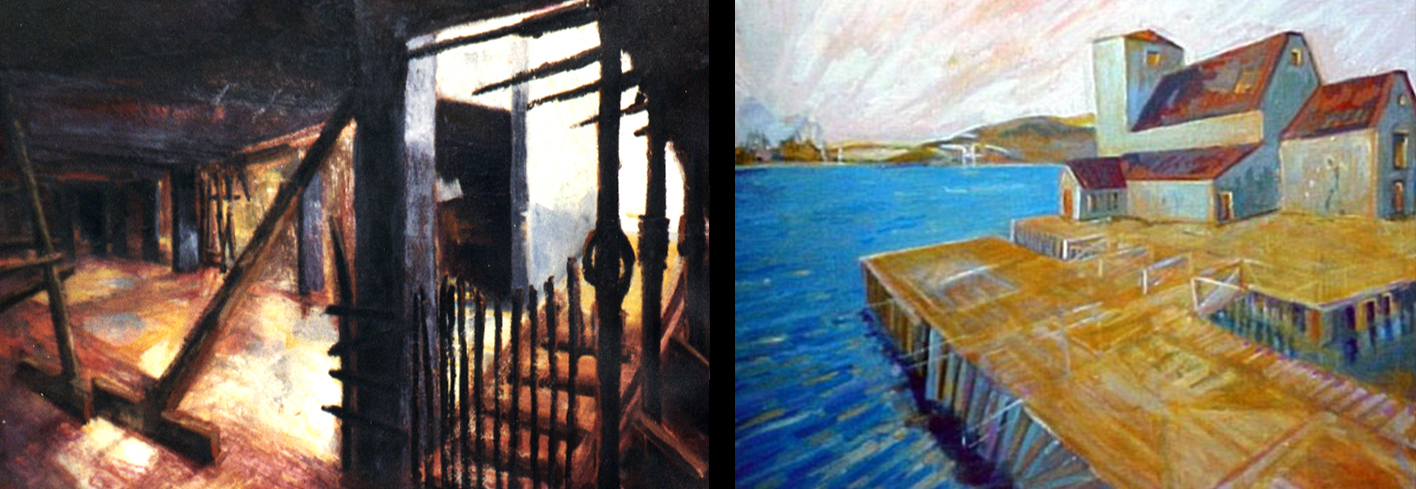
The Metaphor and Representation of the State of Mind
The painting to the left is a metaphor of a state of concern, anguish, and despair. As man searches and fights to achieve the solution to a problem, he endeavors to look through the windows of the mind, opening doors until he finds the light and an exit.
On the other hand, the painting to the right represents the moment where man finds the solution to his problem and experiences peace and fulfillment. He remains in this state until the next problem forces his return to the labyrinth of the conscience.
Painting and Conceptual Art in the Museum
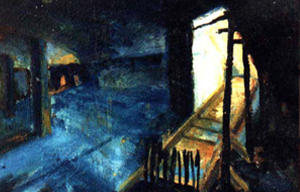
Painting
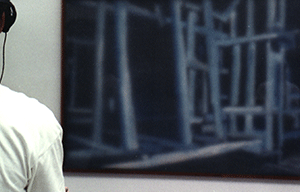
Conceptual Art
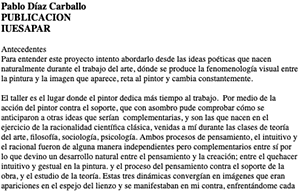
Thesis
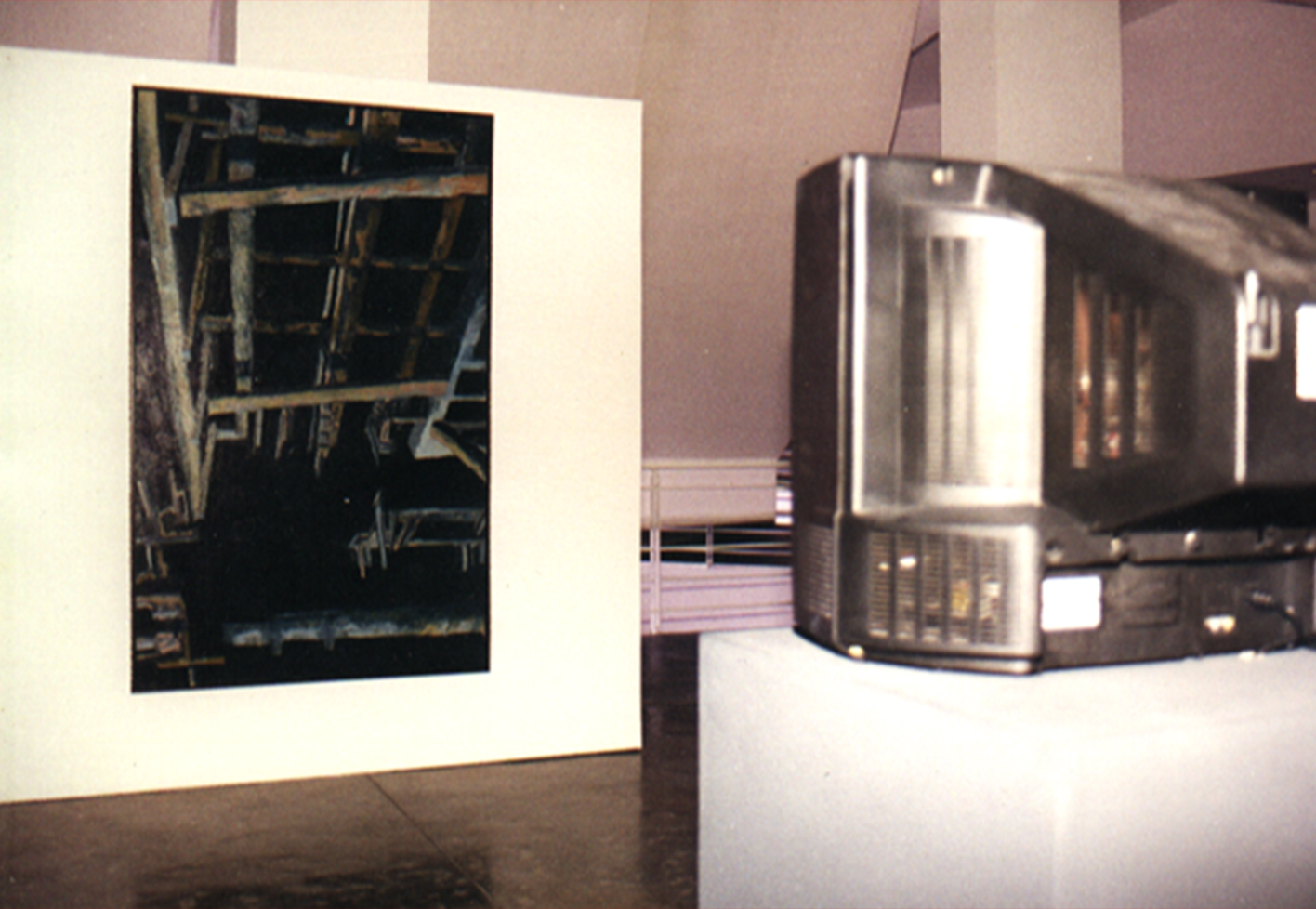
Pablo Diaz’s creations invite the spectator into a visual, auditive, or audiovisual experience, leading the spectator to analyze and mentally complete his experience of the work of art.
ART EXHIBITIONS
POETICS of the HOUSE of MIND
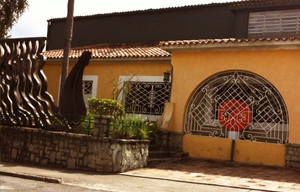
GALLERY
Diaz Mancini Gallery
Performance, artworks, and exhibition in the art gallery in La Castellana, Caracas 1999.
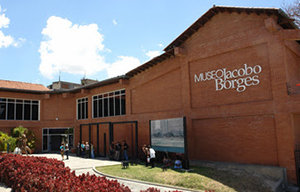
JB MUSEUM
JACOBO BORGES MUSEUM
Pablo applied culture as an “antivirus” system for individuals with “sociocultural disorders”. Caracas, 1999.
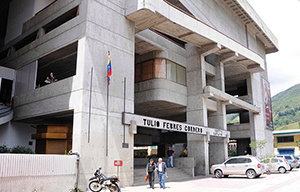
TFC MUSEUM
TULIO FEBRES CORDERO
Pablo Diaz – Paintings and Expanded Concept of Arts, Solo Art show. Merida, 2000.
THE EXPANDED CONCEPT OF ART

The Expansion of Creative Consciousness through the Fine Arts.
The Expanded Concept of Art proposes that the arts should go beyond the simple production of art pieces as purely decorative objects, to become a proposition that intellectually challenges the spectator. From these premises of contemporary art, we find insight into the work of Pablo Diaz Carballo.
Contemporary Art
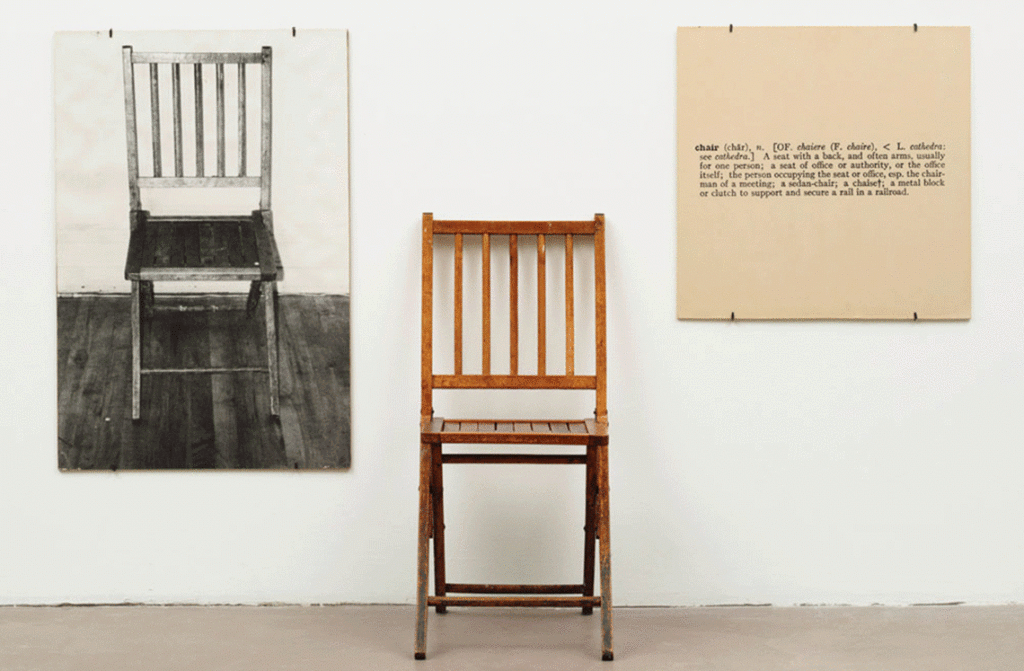
With contemporary art, the artist not only creates the sculpture or painting, but he focuses on molding the mind of the spectator by using the resources of conceptual art.
Through his painting or sculpture, the artist challenges the spectator to consider a theme; the piece of art becomes complementary to that theme, such as the depiction “One and Three Chairs” from Joseph Kosuth. Conceptual art is closer to philosophy than other artistic disciplines.
During an art workshop, while drawing a tree outdoors, and thanks to the drawing exercise, Pablo Díaz had the visual experience of contemplating the presence of the tree as he had never understood it before.
Pablo had learned to look at things at school through the concept, in this case, the concept of “tree” but he had not previously experienced the real contemplation and phenomenology of the tree as a living being, presence, etc.
So the training of the look with the drawing revealed another reality, another way of looking at things, in this case the look trained to draw a tree.
Pablo understood that due to the lack of such experiences during his school years, he then saw the tree only through the concept, but not through his visual presence.
Therefore, to achieve substantial changes in the “House of the Mind” of other people, the experiences of the arts are pre-eminent in the expansion and development of creative thinking.

Marcel Duchamp: Arte Conceptual. Andy Warhol: producción en serie y masificación de la producción de la obra de arte. Joseph Kosuth: Concepto, imagen y experiencia del objeto.
References and influences from master artists
Giotto, Leonardo Da Vinci, Rembrandt – Marcel Duchamp, Andy Warhol, Joseph Beuys, Joseph Kosuth, Jackson Pollock.
Regarding the Expanded Concept of Arts, Joseph Beuys affirmed that arts should emerge from museums and exhibition halls to become part of day to day life. Arts are a fundamental catalyst of moral, political and economical changes in men due to the artistic concept being primarily of anthropological character.
PROBLEM

Arts are essential for the development of creative thought and innovation, and therefore essential for the development of the country. Why then are arts considered to be subjects of such little importance in education? Thus, to teach arts, it is necessary to teach not only the concept but more importantly, the experiences of art.
How is one to design the House of the Inner Being in the mind of another person in order to boost his creative capabilities? How may one transmit the importance and the value of arts during education?
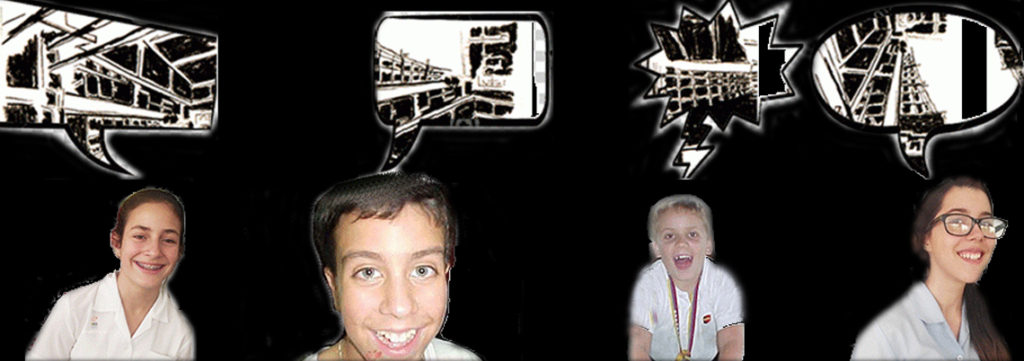
Origen, Development and Conclusion
Through the Expanded Concept of the Arts and the development of his paintings during this phase, Pablo was able to introduce changes in the official education system in schools in Caracas. These changes were based on the importance of the arts for the expansion of the mind through the development of creative thinking, and the importance of the artist in these processes of thought and creation.
Pablo Diaz was an active member of a branch of punk rockers, consisting of young artists, musicians, and cinematographers – most of them from Catholic schools. They felt furious and helpless as they observed how politicians established a system of corruption that had been slowly destroying Venezuela since 1960, subjecting the majority of the population to terrible injustices and human rights violations. Pablo desired to do something to produce substantial changes against this reality.
So he kept the intention of doing something that would produce a shock change against this terrible reality, in an oil country rich in natural resources, which was considered the Switzerland of Spanish America.
Pablo Diaz had personally experienced the mediocrity of the art programs in his school. He knew that children have the capacity to develop their skills through creative thinking, particularly those considered of “bad behavior”, but the schools gave pride of place to sciences and sports.
This culture in the school system ignored the vocation of artistic students, whereas it should have promoted the importance of artistic and musical disciplines alongside the other subjects. The system of education should have offered opportunities to those artistic students which the socialist system of education had been denying to them for decades.
By combining the concept of the House of the Being with the Expanded Concept of Arts and the principles developed by Andy Warhol, Pablo developed a system to bring artistic programs to the masses. His programs of art and music contributed important changes to the system of elementary education in Venezuela, benefiting nearly 4,620 students and their families.
In this way, Pablo Diaz achieved his objective by inverting the primitive and violent concept of the punk rock movement, accomplishing substantial changes in the system of education over the course of fifteen years through the stunningly high quality of his artistic programs.
Andy Warhol and the Factory
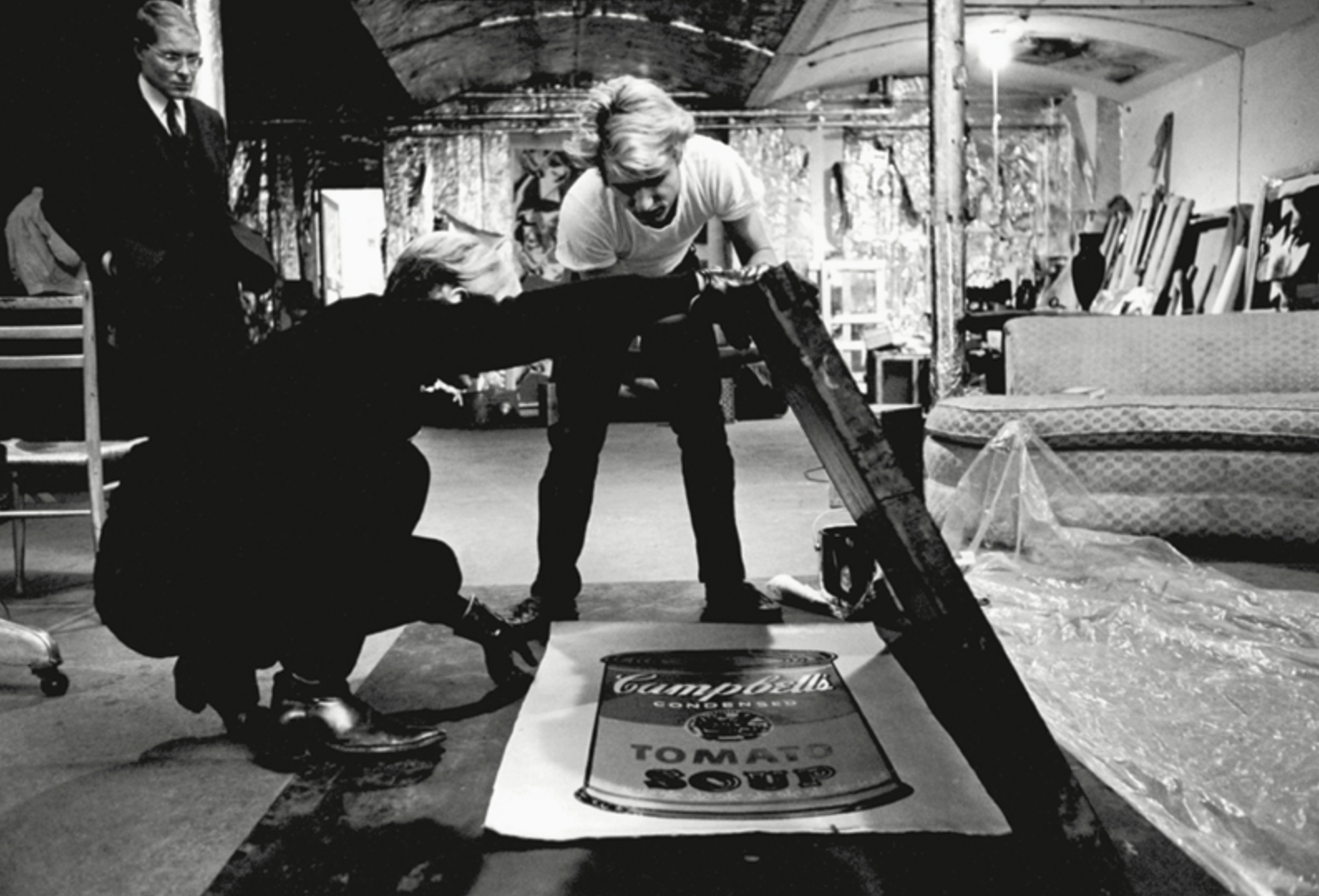
Influenced by Conceptual Art of Andy Warhol’s Factory, Pablo Diaz Carballo, founded La Buena Gripe and then Ideo Arte with which he developed the serial production of art and music workshops to modify the house of the students’ minds through experiences, in relation to the question: “What is Art”. He worked with Arelis Diaz and a team of diverse artists from various disciplines including artists, musicians, designers, filmmakers, etc.. For fifteen years he achieved a high serial production of school artworks, recordings, audiovisuals, etc. It was a factory of thought processes and creation, with projects, products, and services of student artworks with which they managed to shock the system through experiences and works of children’s art with quality to present in museums and concert halls.
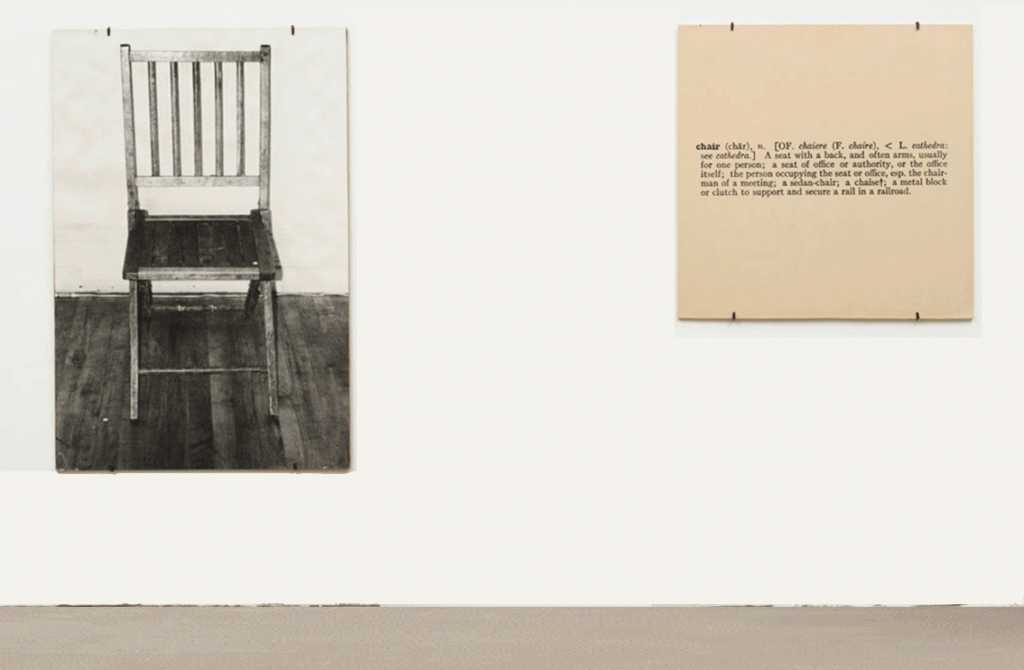
Intervention by Pablo Diaz of the picture “One and Three chairs” by Joseph Kosuth.
When considering the piece “One and Three Chairs” by Joseph Kosuth, Pablo Diaz realized that schools did not have a program for the development of the creative process. The school program then in place was based upon repetition and memorization of concepts with the objective of obtaining grades. Regarding artistic education, there were no art or music workshops developing the creative experience of the arts. As an analogy, it was as though the students were shown pictures and concepts of a chair, but they were not allowed to see an actual chair, touch it, and sit on it in order to live the experience. Pablo Diaz presented these projects of Conceptual Art in an exhibition in the Jacobo Borges Museum in Caracas, 1999.
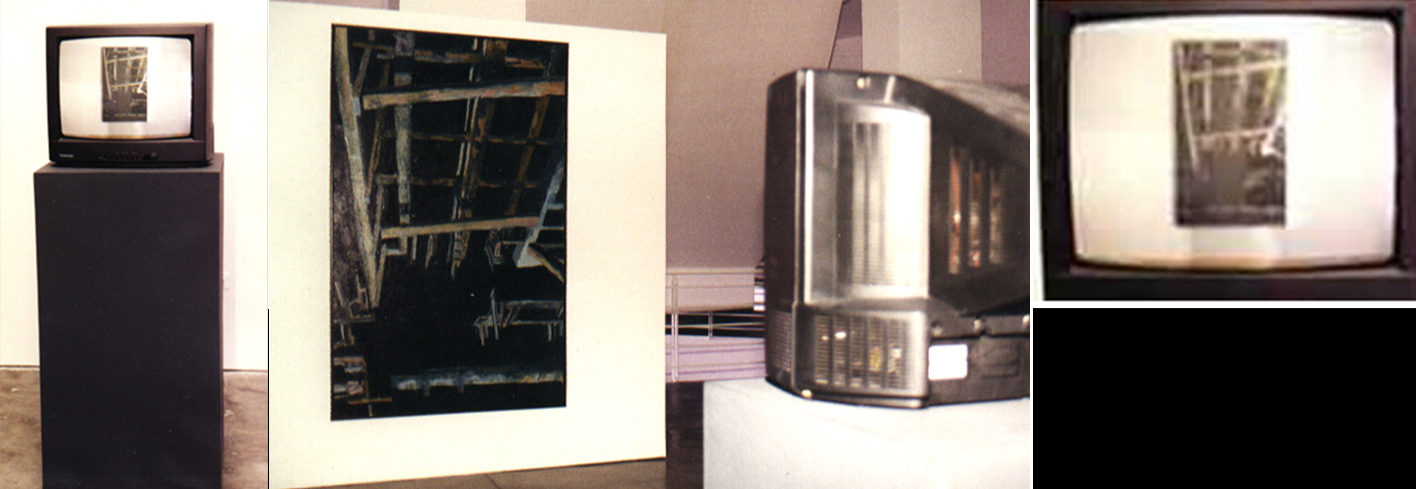
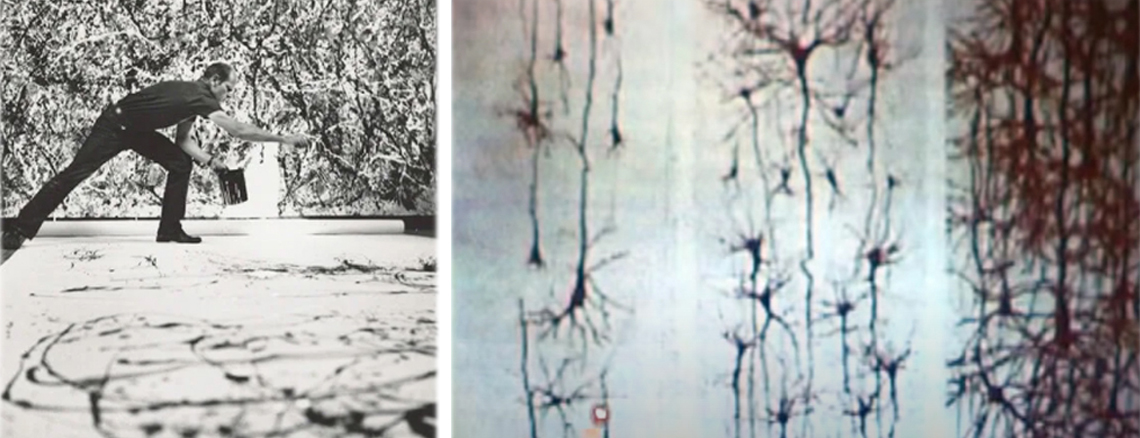
To the left: Jackson Pollock – To the Right: Microscopic image of Neuronal Nets – Dr. Ricardo Castañón
One of Pablo’s inspirations is Jackson Pollock and his technique of dripping, as Pollock did not touch the canvas at any point. In the same way, Pablo Diaz was able to transfer his ideas to the minds of students through teachers who followed his instructions. They were able to create graphs or neuronal marks with his artistic programs. As can be seen on the microscopic image to the right, corresponding to the brains of three different individuals, each individual had different levels of education (basic, medium and complex), and their neuronal maps show biological differences. It is also interesting to point out that Pollock’s images are graphically similar to the brain and neuron sample plates presented by Dr. Ricardo Castañón during his conference “When the Word Injures”, regarding the impact of the word according to Cognitive Neurophysiology.

From the Painting to the Conceptual Art and to the Expanded Concept of Art. The Result was a Cultural Work of Art: IDEO ARTE.
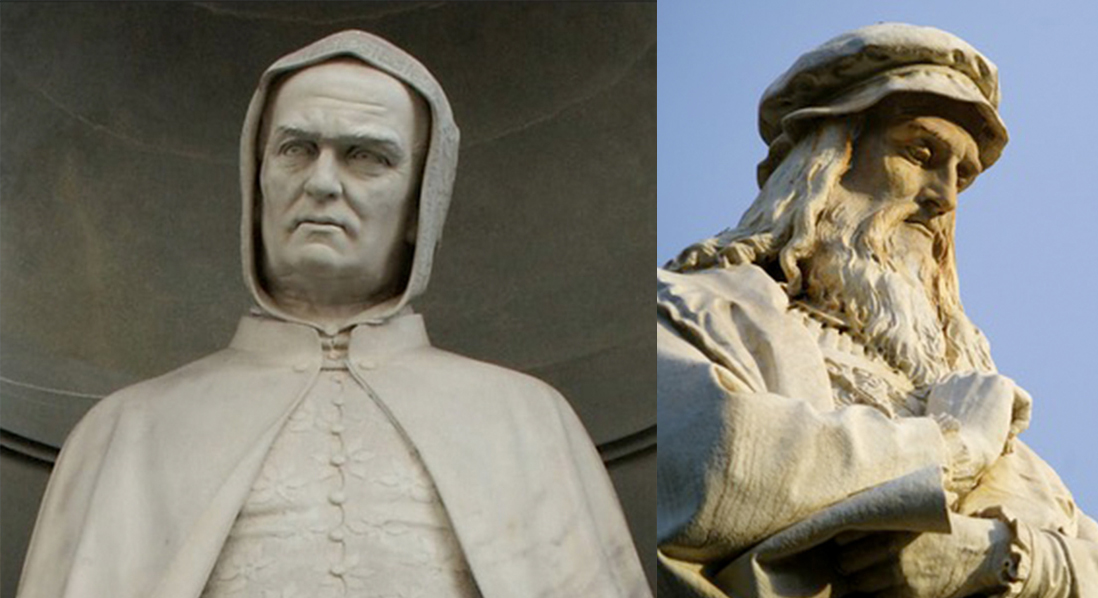
Pablo Diaz Carballo was inpirited as well for Giotto di Bondone and Leonardo Da Vinci.
Giotto did not only paint what he saw, but he also painted what he conceived in his mind. Leonardo represents the methodology of universal Artist, the multidisciplinary thought that he works simultaneously in various fields of Arts ans Sciences.
Pablo Diaz Carballo painted the House of the Mind metaphor, and he worked like so many other multidisciplinary artists, whose greatest exponent is Leonardo Da Vinci, in various areas for his Expanded Art work, he did work as a creative, conceptual and intellectual artist of his art and music programs, painter, graphic designer, programmed with the Flash program, teacher, project director, pianist, drummer, assistance in recording music and mixing songs, video camera, editor, stop motion, among several other activities.
1999 – 2017
THE CONCEPTUAL ART LAB
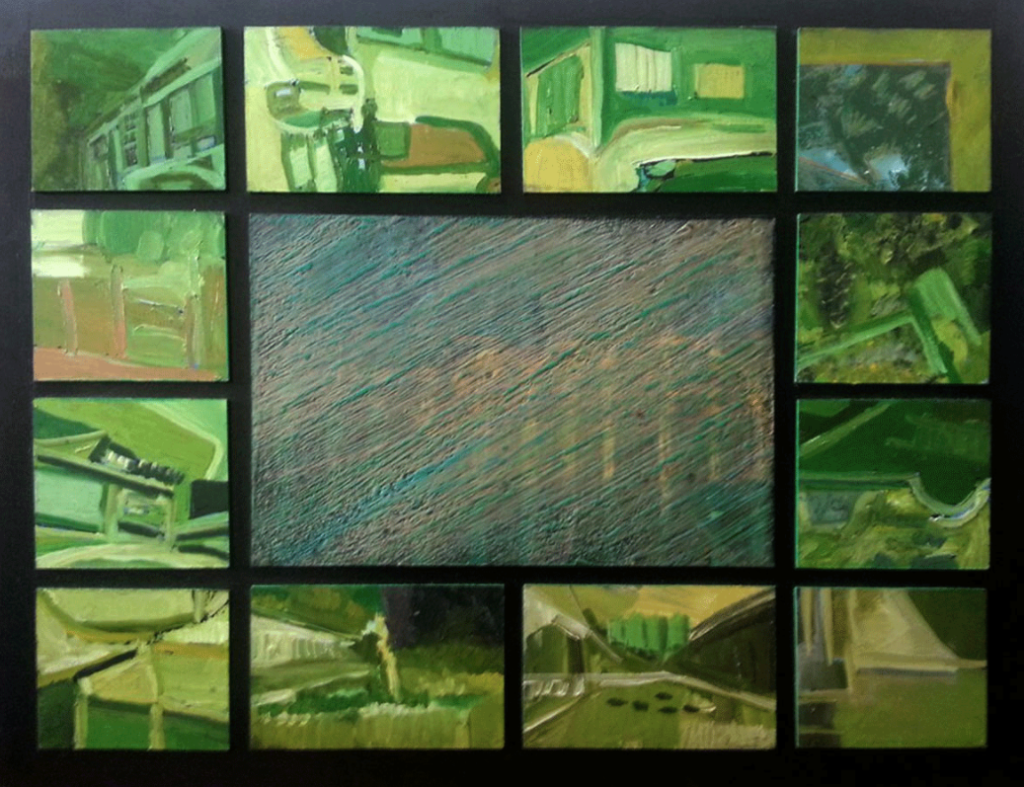
During those years he produced and exhibited forty-two paintings related to this process of conceptual art, using oil or acrylic paint on polyptych wooden pieces.
ARTS – MUSIC – AUDIOVISUAL
Pablo Diaz worked with Arelis Diaz to form Ideo Arte, his own conceptual art lab that culturally impacted thousands of students.

According to the Expanded Concept of Arts, music was fundamental to the development of Pablo Diaz´s projects. The senses of sight and hearing are two of the most demanding senses, requiring sensory, cognitive and intellectual processes. Modern culture is intensely visual, auditory and audiovisual. Aside from this, there are similarities in the areas of both sight and hearing – for example, the temperature or the color of the sound, scales, tones, harmony, rhythm.
Even though both fields are very well differentiated, there is a profound relation between music and visual arts, which can be appreciated through the depths of masterpieces of classical music, the improvisation of Jazz, the simplicity of rock, and the primitive strength of punk-rock. Thus, music became an instrument for Pablo Diaz during his work of rebuilding the house of the auditive conscience. Among his influences were Bach, Mozart, Beethoven, Erick Satie, Debussy, John Cage, Bert Kaempfert, blues, jazz, The Clash, Ramones.
PRELIMINARY TEST
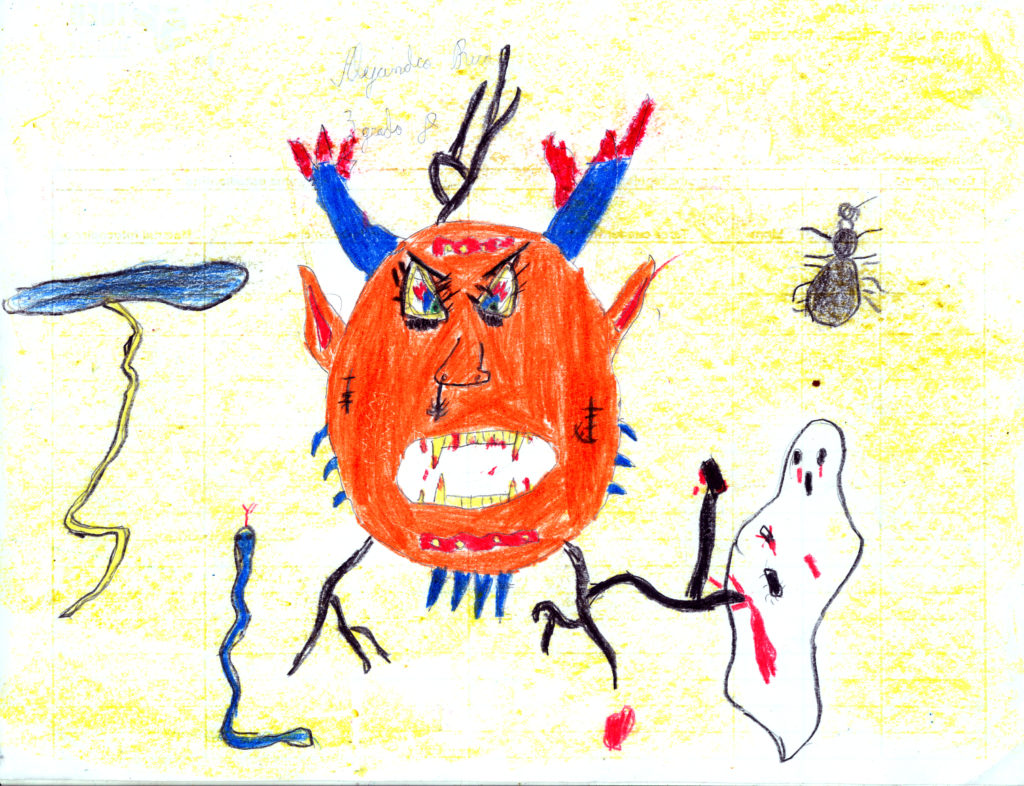

During the introductory class at Ideo Arte, the students participated in a diagnosis exercise, where they were asked to make a free drawing. The results were standard, for example: triangle-shaped mountains, V-shaped birds, stickman people, and other stereotypes. Another example is the one shown on the image above, where the drawing of a third grade boy displayed violence. The standard school arts programs had been producing results like these throughout elementary school and high school.
LEARNING ARTS
New Methodologies
Pablo Diaz started to work on his conceptual artwork, like an architect or engineer of the mind, developing new experiences, methodologies, and technologies for his programs of creative thinking – both for the classroom and for extracurricular activities.


The new architecture of the House of the Inner Being implied the application of the Expanded Concept of Arts to develop music, arts, and audiovisual programs – like architects or engineers do with their projects, or like Jackson Pollock as he did not touch the canvas with his paintbrush.
Arts are taught at school, but not really from conceptual art. Pablo Diaz managed to transmit the biochemical energy of his ideas through the resources that he used – in this case, strategies to change the comprehension of the historical question “What is art?”, to change the way Arts are known. Thus, thinking about the factories of Andy Warhol, Pablo Diaz and his wife hired a group of artists and musicians to apply his programs on a large scale.
Over the course of twenty years, Pablo developed his work of conceptual art in the minds of the children, in the mind of the teachers, of the families, of the community, and of the artists that participated in his programs.
Pablo and Arelis Diaz created all the needed strategies and methodologies to demolish prejudices, opening windows and doors as ways of accessing experiences to modify the “design of the House of the Inner Being” until reaching the objectives of the Conceptual Art: the modeling of the conscience, modifying the walls of the conscience in relation to what was understood as the Arts in basic education.
RESULTS
Conceptual Art Projects and results
THE POETRY OF THE HOUSE OF THE MIND
Creative Conscience through Arts
NEW STANDARDS IN ARTS DURING ELEMENTARY EDUCATION
ARTS
Almost five thousand children benefited from the visual arts and music programs. The premises of the problem were also proven at the international level, when three hundred more children in Willemstad, a Dutch province in the Caribbean, received these programs.
Annual results of Fine Arts, Audiovisual Arts, and Music recorded in CD, DVD, Blue Ray Format delivered to each student who participated in the programs.

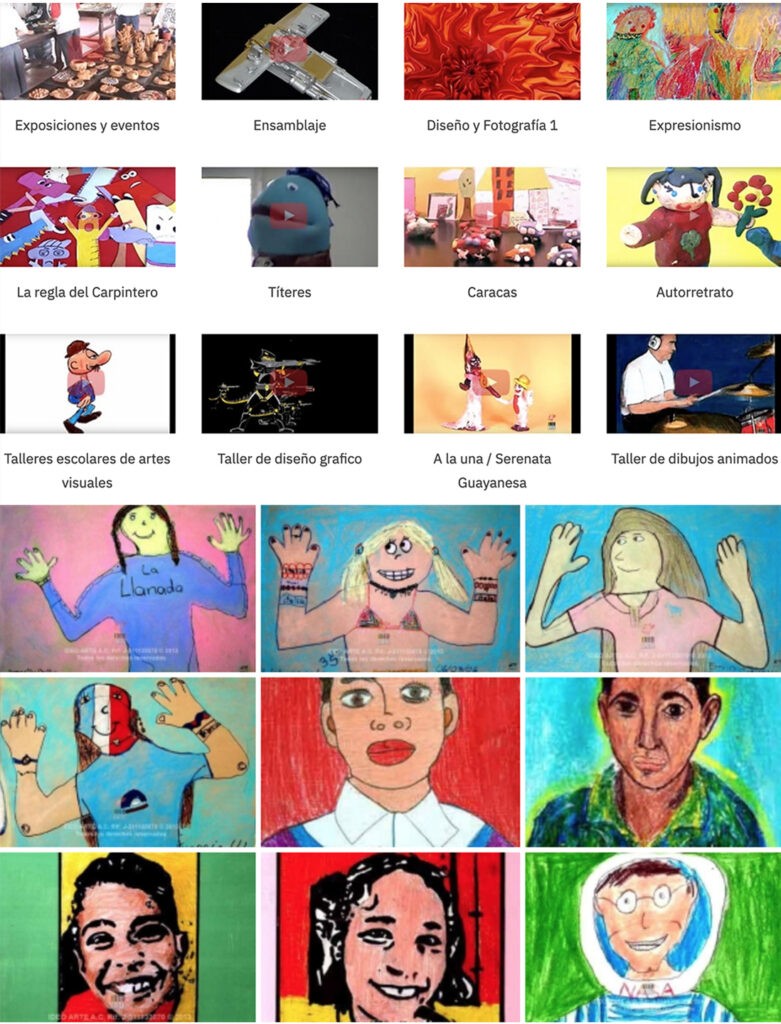
MUSIC
Standard open class in the school and the contrast with the new standard with IDEO ART: Concert, live recording, live sound and sound master mix with engineers, and CD, DVD and Blue Ray professional post production.
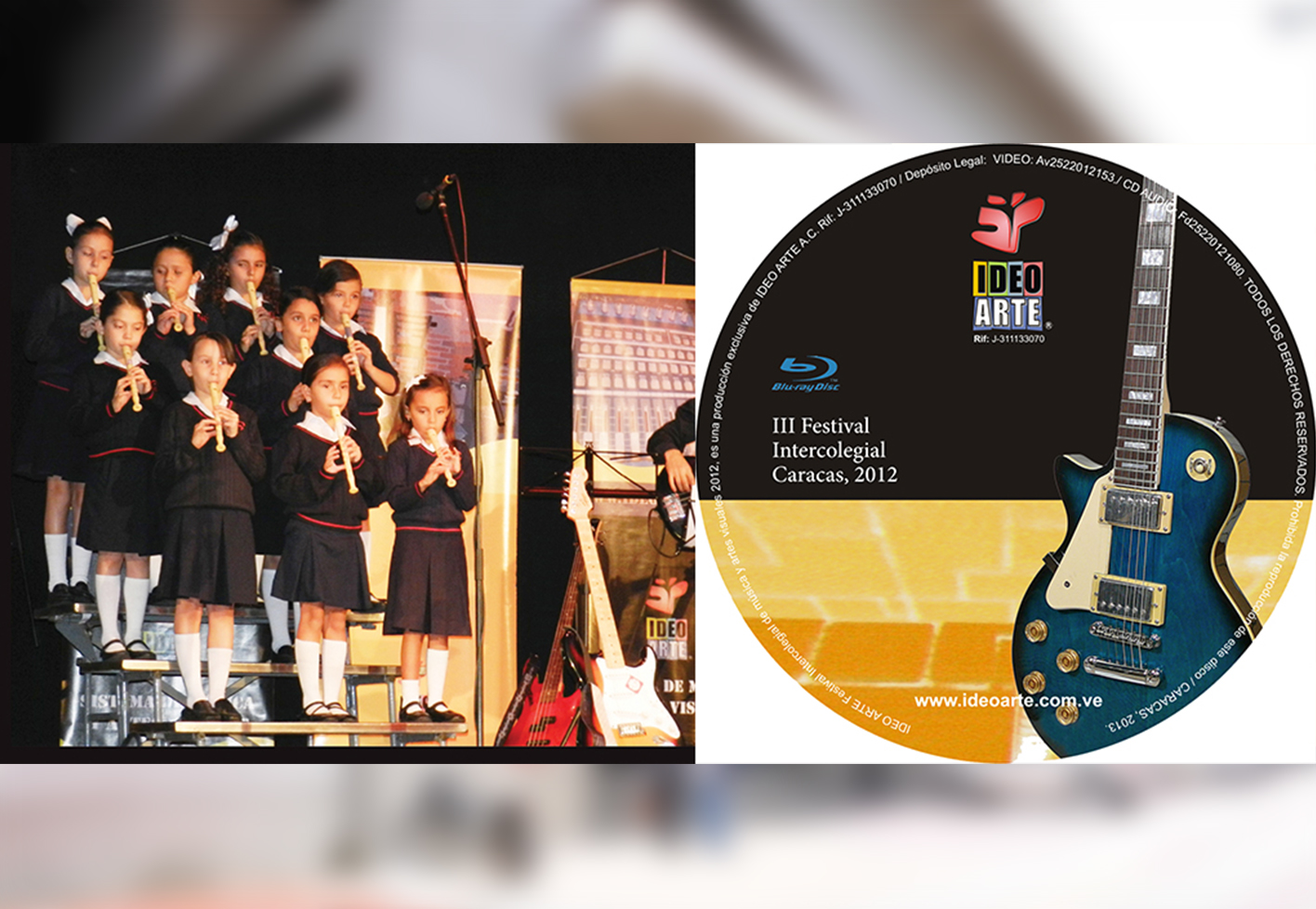
AUDIOVISUAL
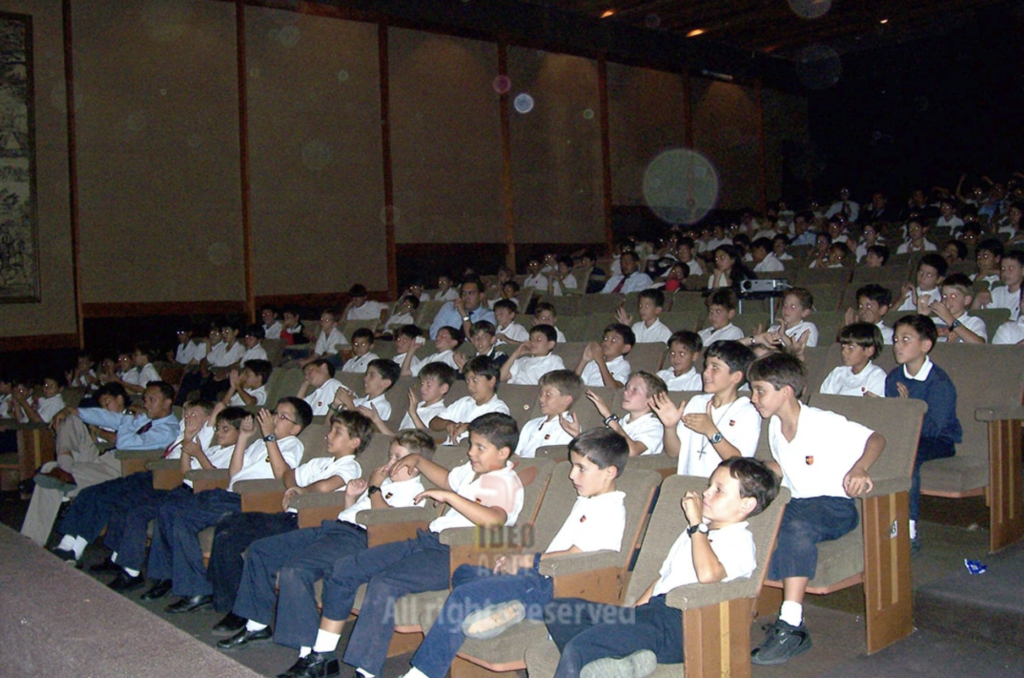
PAINTINGS
From Conceptual art and the Expanded Concept of the Art´s Process.
2019
In recent years, Pablo Diaz displayed diverse exhibitions in museum halls and galleries. He also developed forty works of art with mosaic and polyptych patterns in which he represented the subjectivity and the overlap of images of the conscience that affect the interpretation of reality. Thus, Arts have a relative value according to the architecture of the house of the mind in each person.
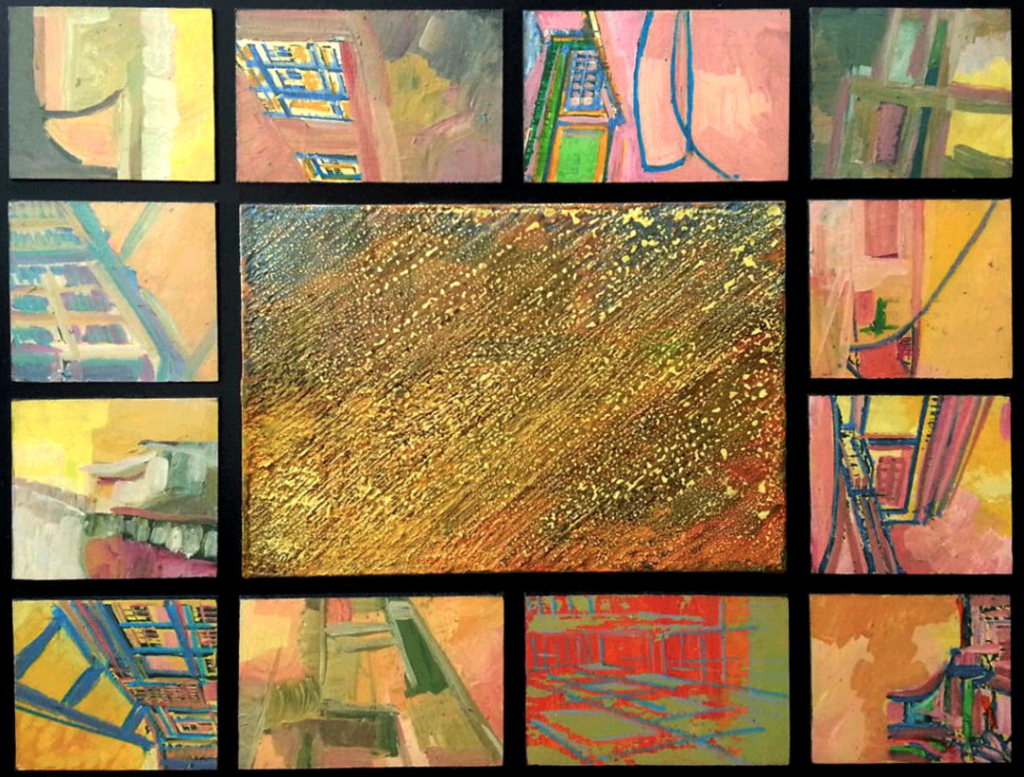
A book will be interpreted in different ways by each person according to the House of his Mind. Each look depends on the images of the memory. A three years-old child will perceive a book very differently from a student that is being forced to do his homework or from a jungle aborigine that has never seen a book. In the same way, they will not see a book the same as a writer or poet who looks at the book with the love that comes from the spiritual aspect of poetry. Each central image in Pablo Diaz Carballo’s paintings represents the objective and physiological sight, while the smaller images represent the cultural and subjective memory that overlap with each other in the visual conscience of the eye, affecting the interpretation of the object.
The entirety of Pablo Diaz’ creative process with Ideo Arte lasted twenty years, and from it were produced the images that Pablo Diaz is processing in his art studio. Thus the circle was completed; from the first metaphors in his paintings, to Conceptual Art, to the Expanded Concept of Arts, all of this comes back to the study of the artist to be worked on currently.
1999 – 2022

The House of the Mind Metaphor and the creative process

Pablo Diaz Carballo’s story is about an artistic process that started from paintings and grew into an exploration of conceptual art and the expanded concept of art, from which Pablo Diaz obtained results from graphical archeology of Ideo Arte, his Cultural Work of Art.
This database of images is the source that inspired him to return to his art studio to resume his painting in new projects of conceptual art.
